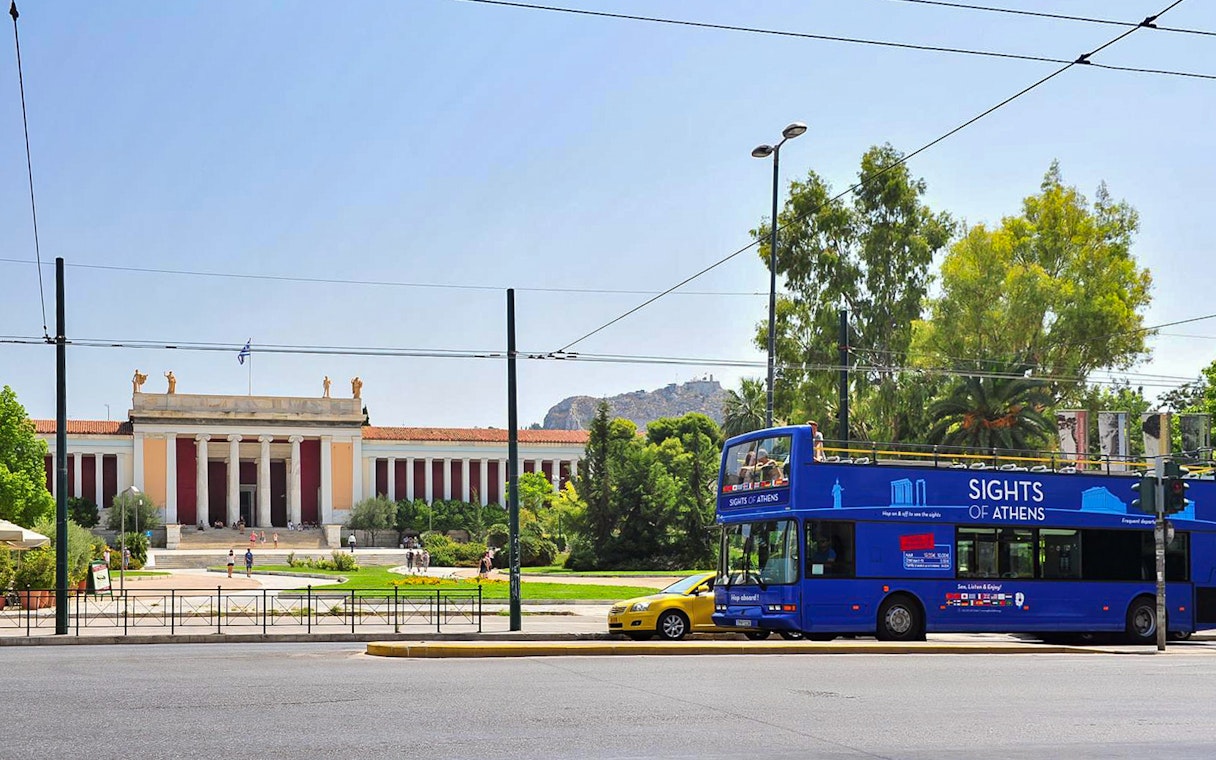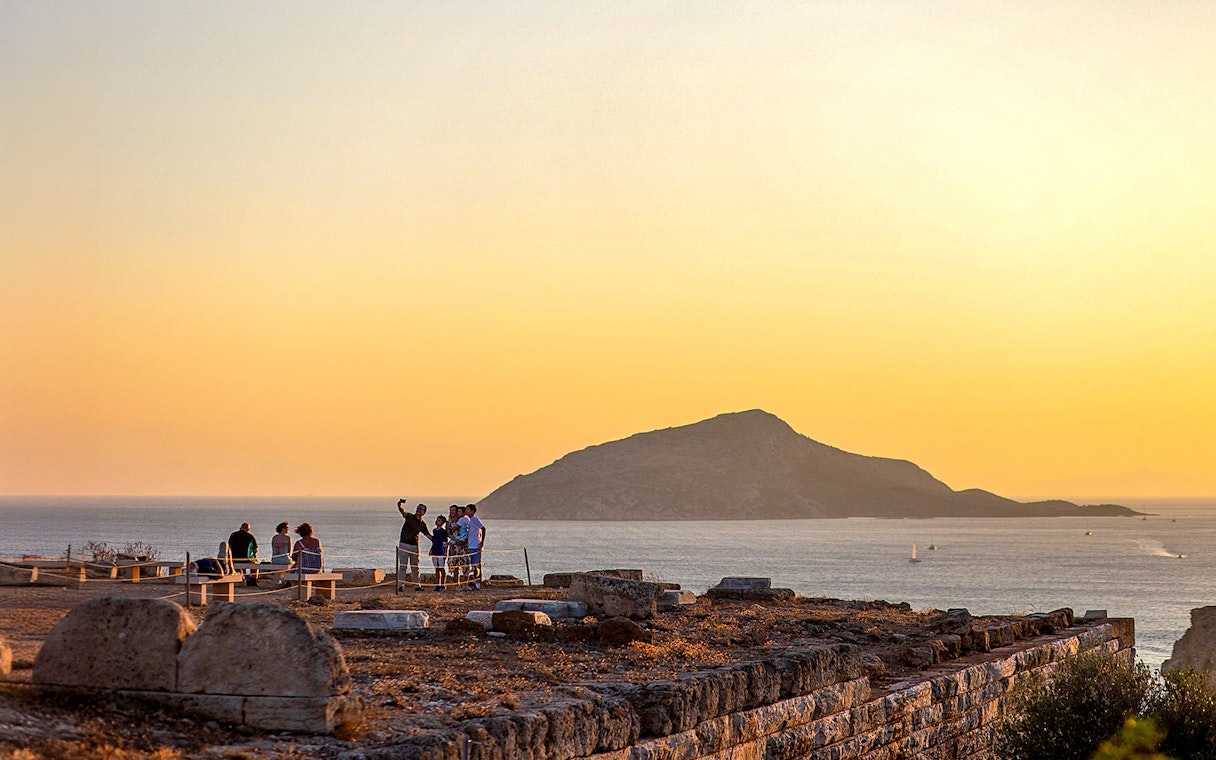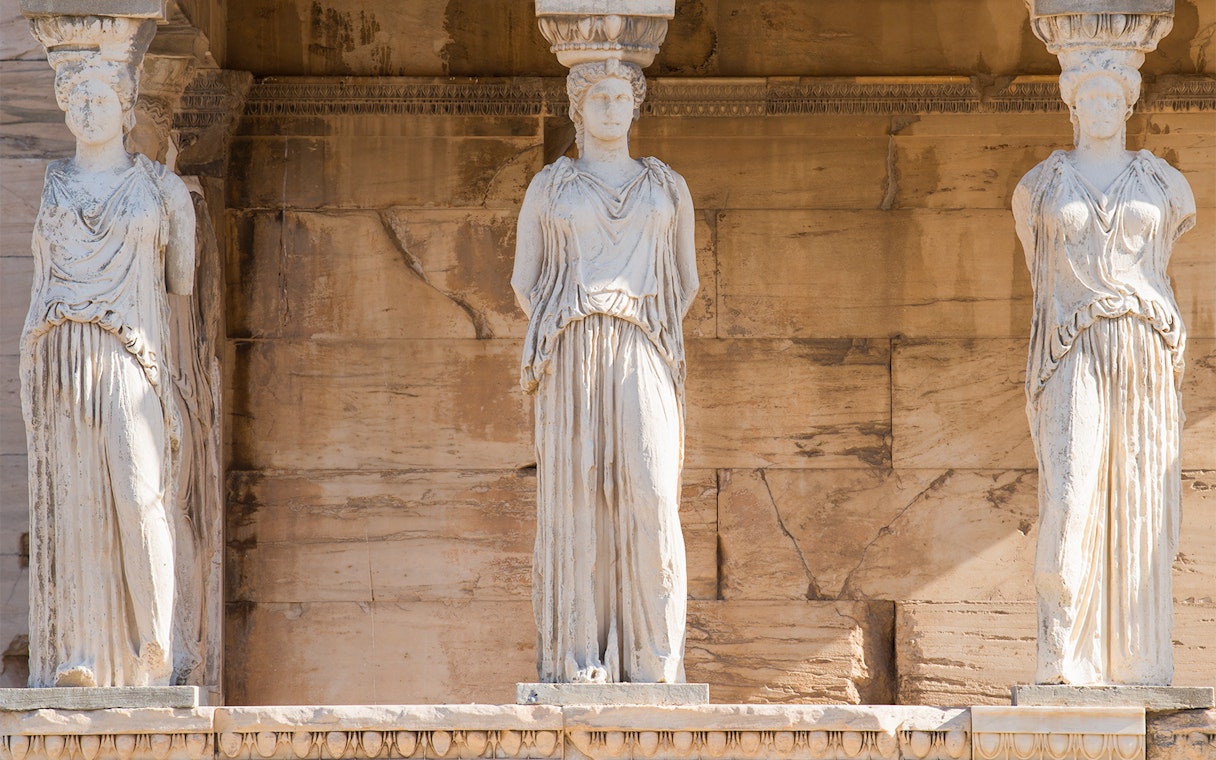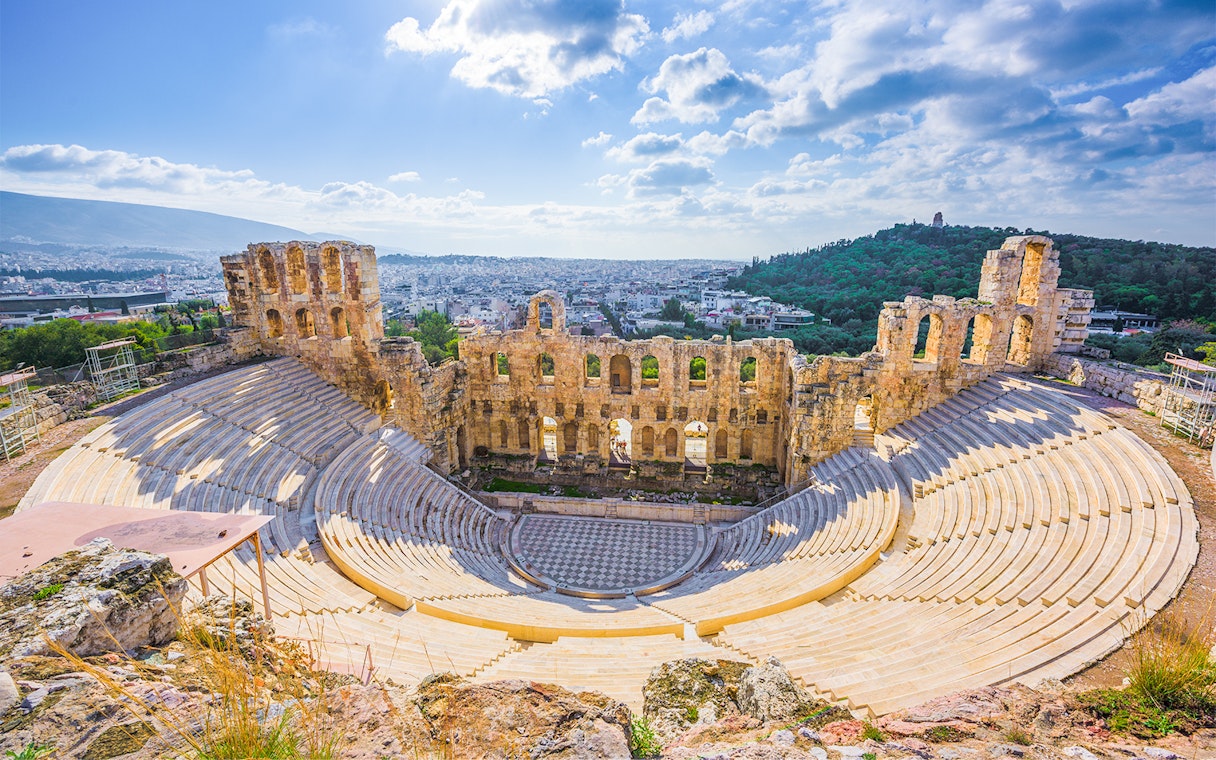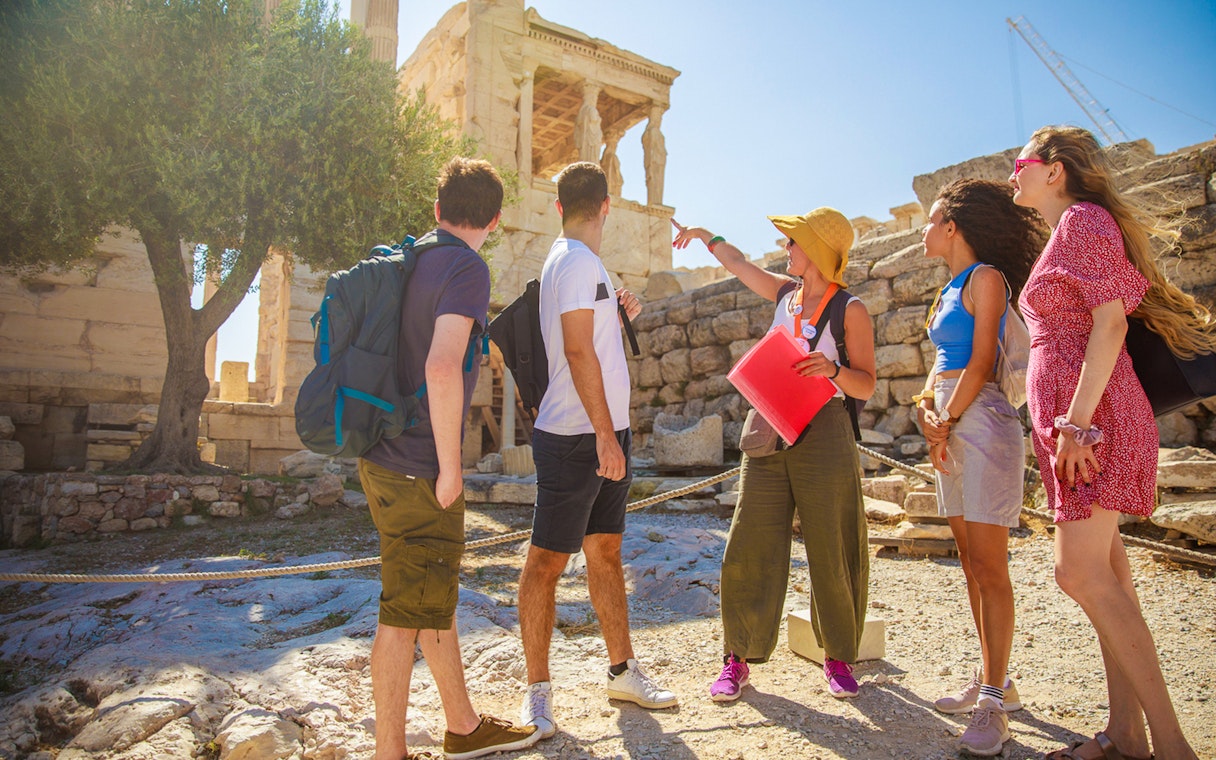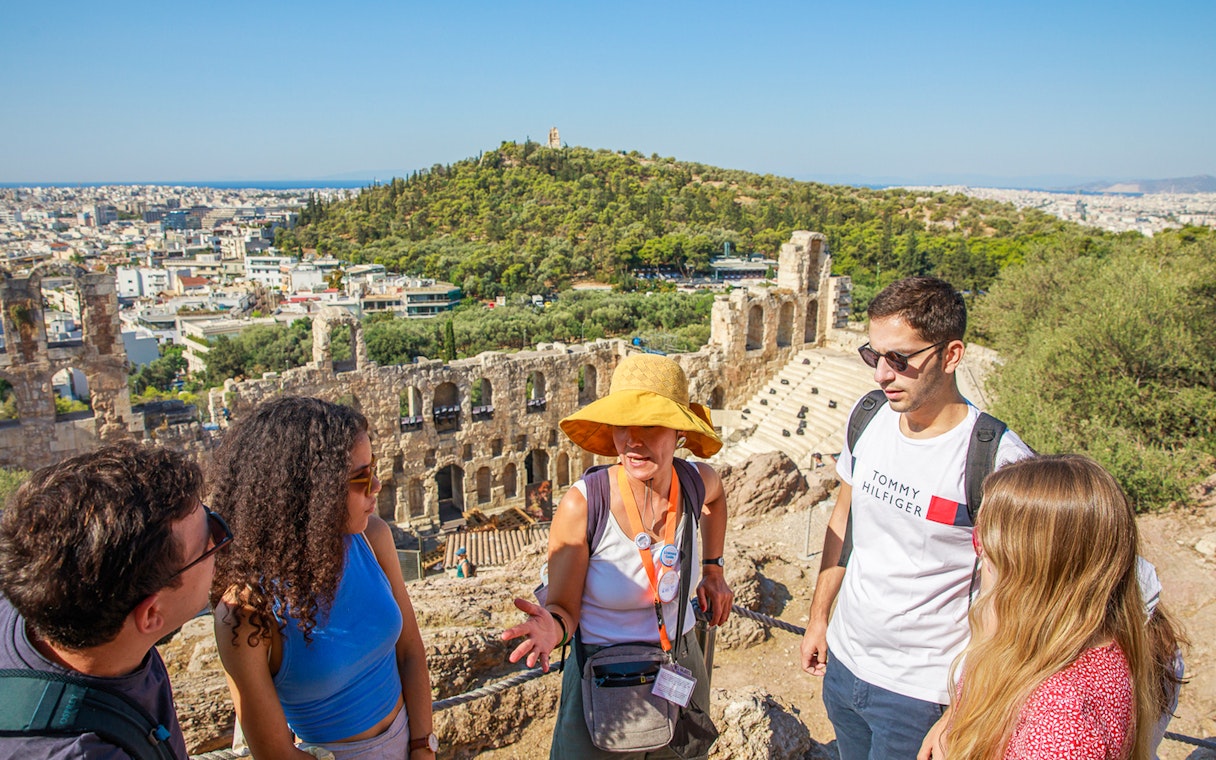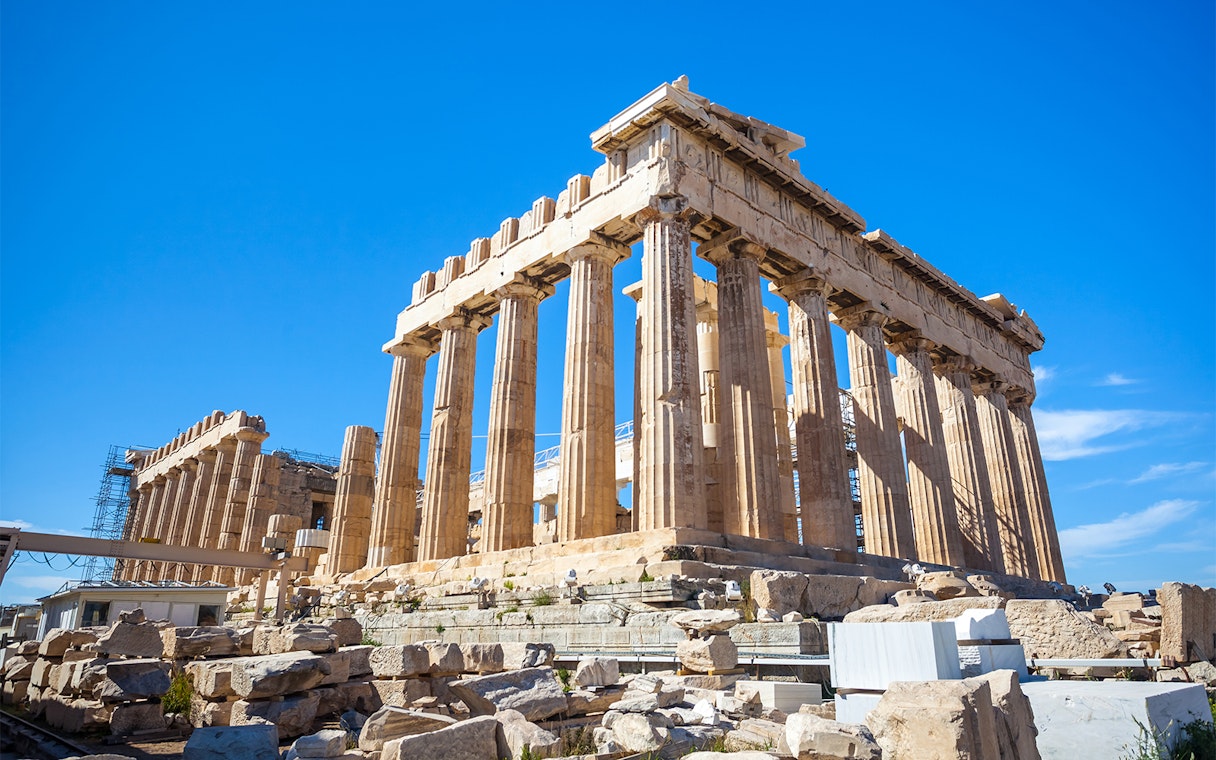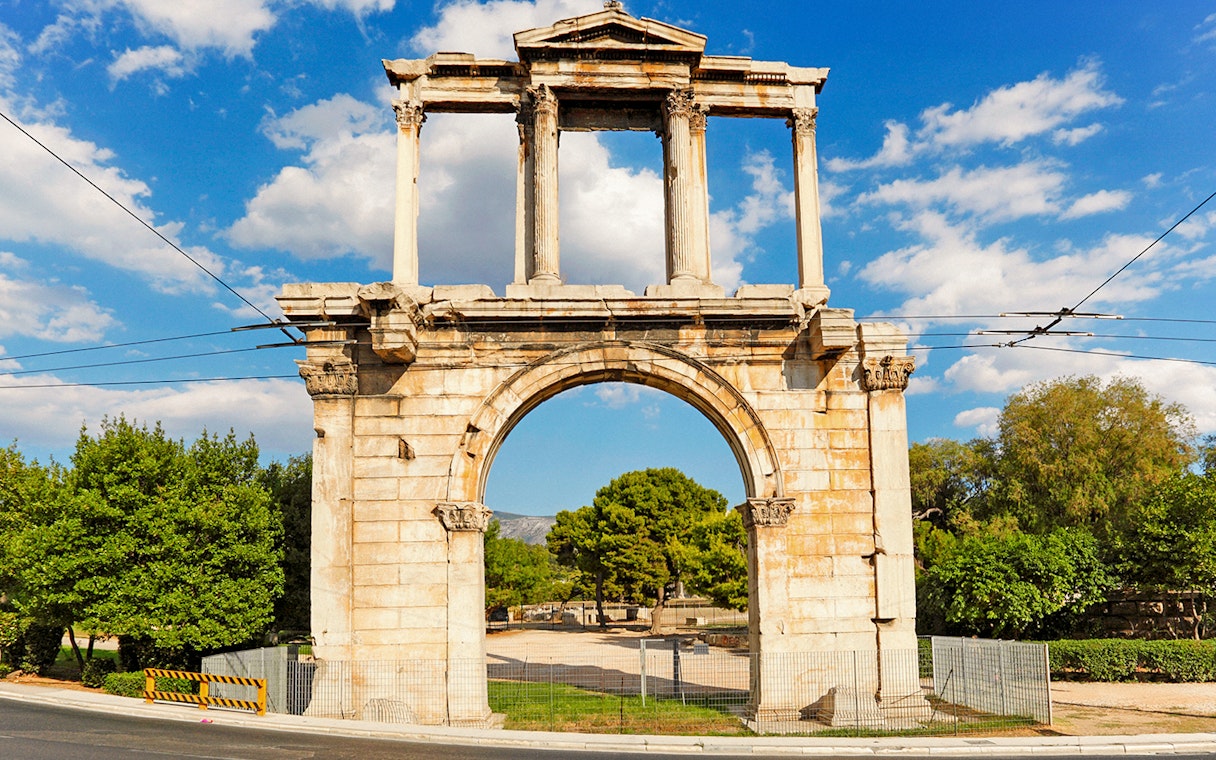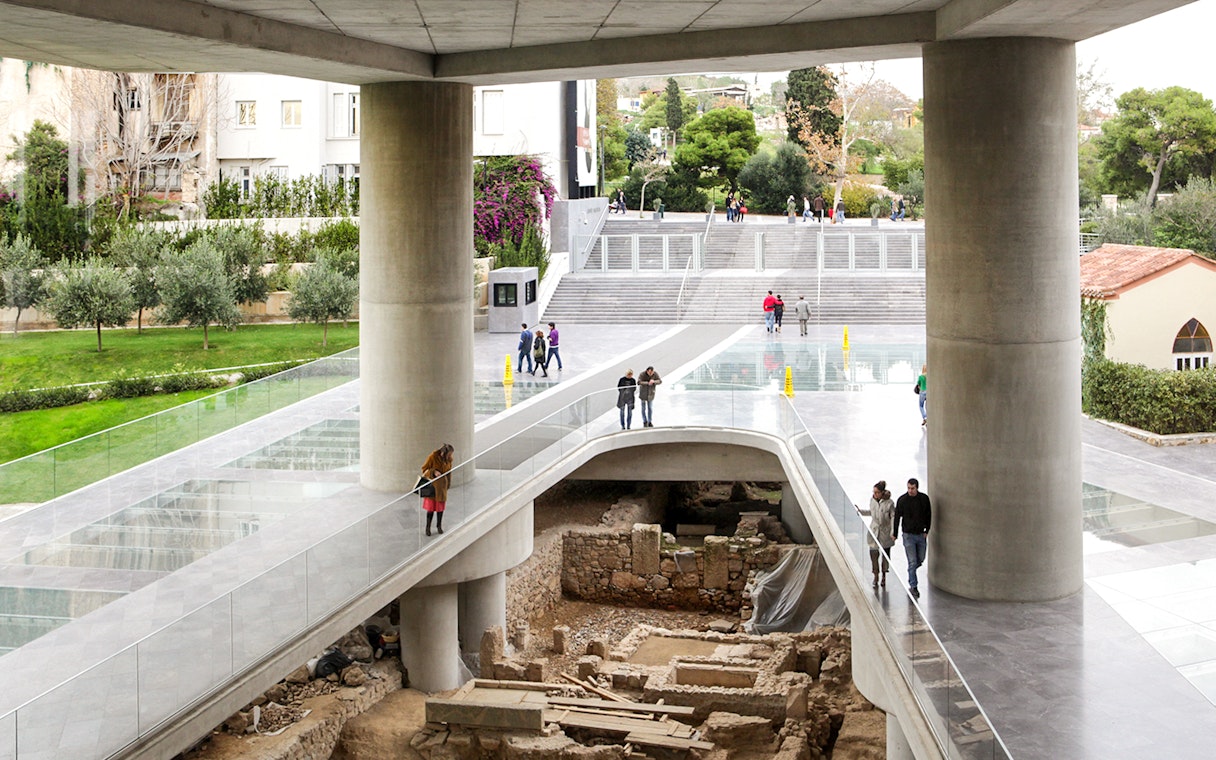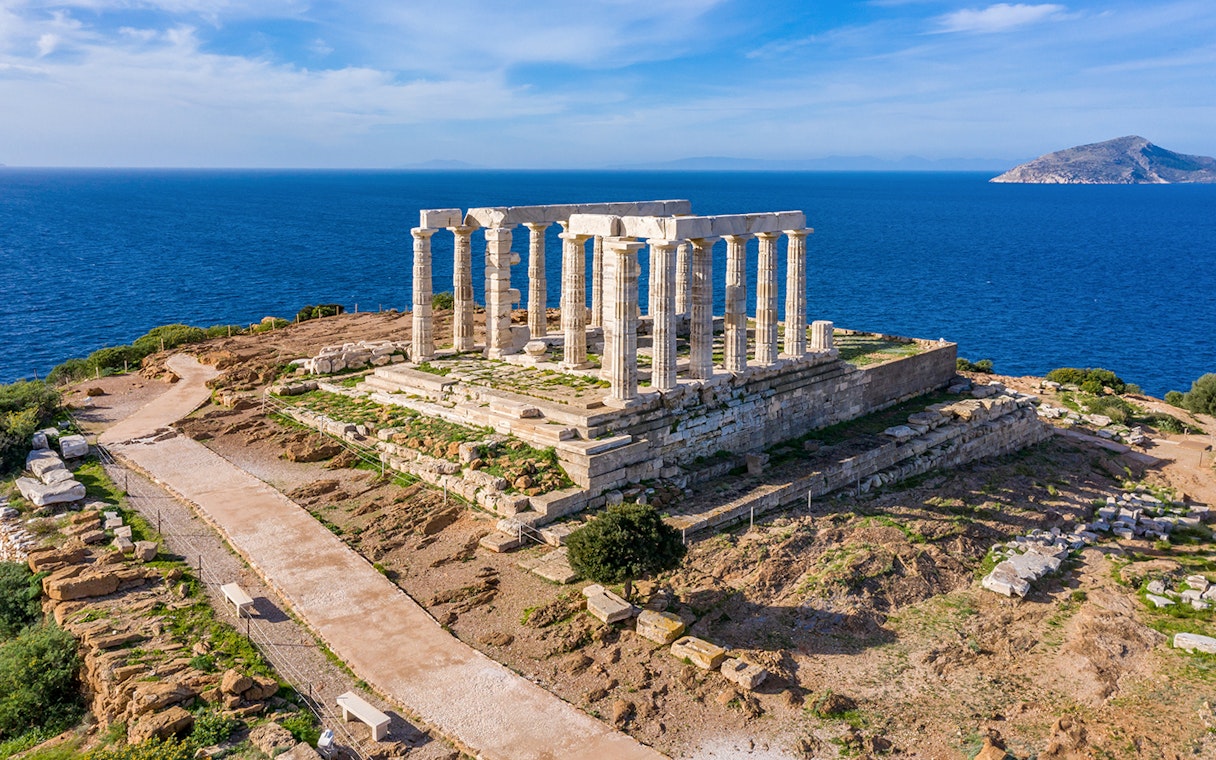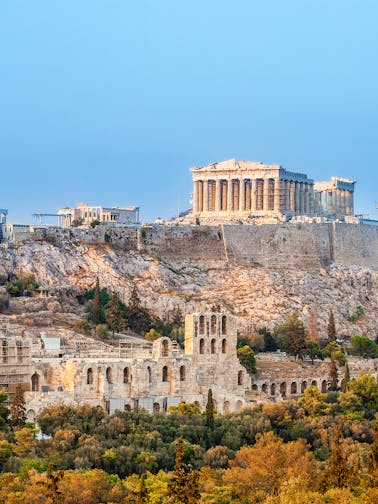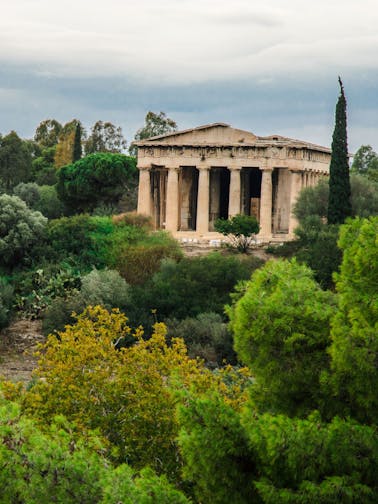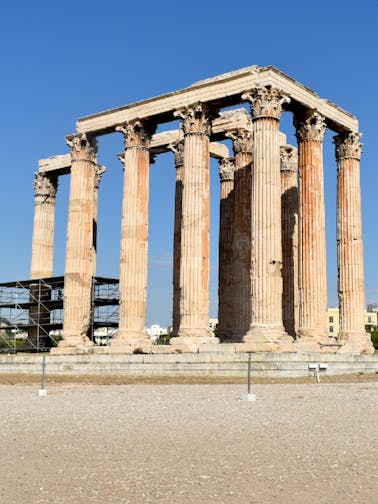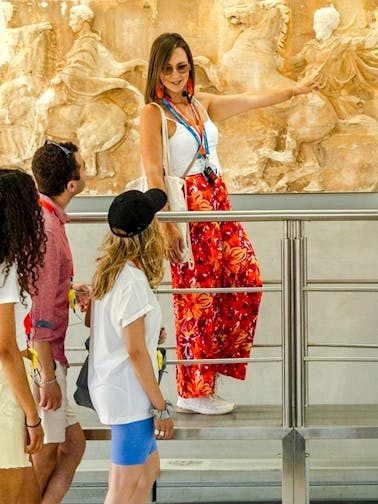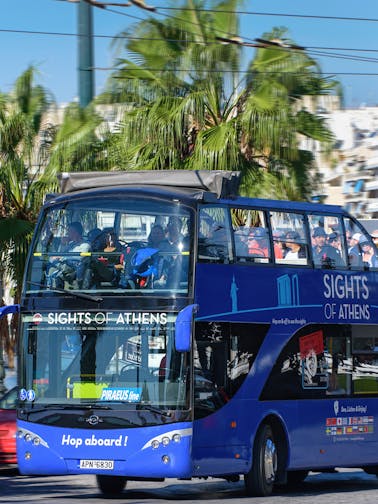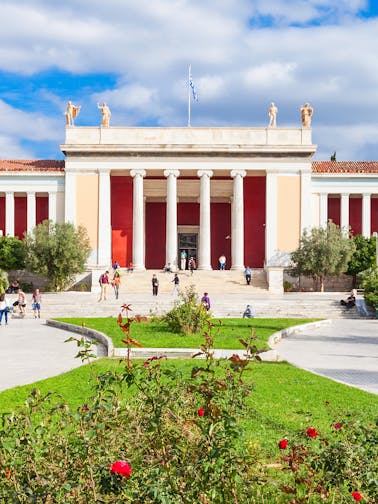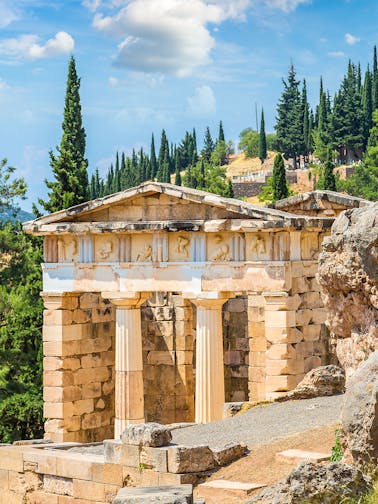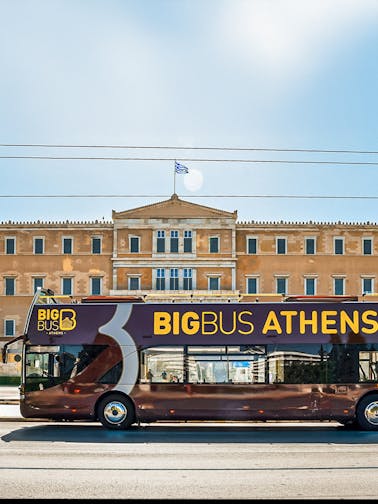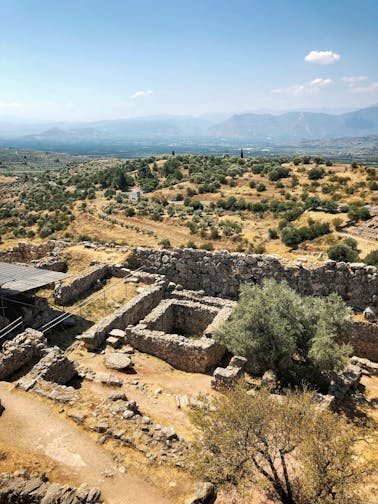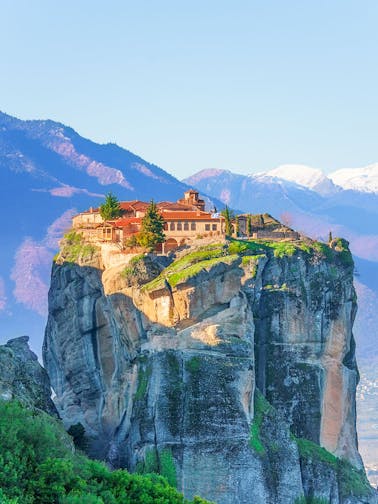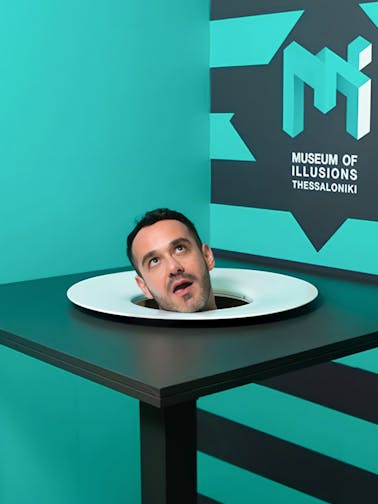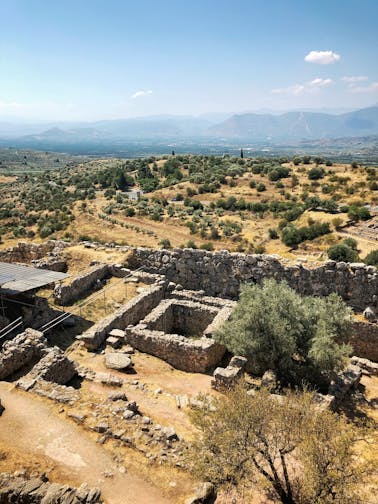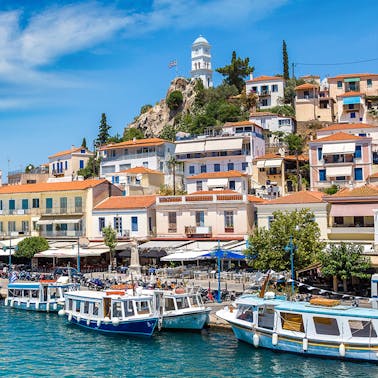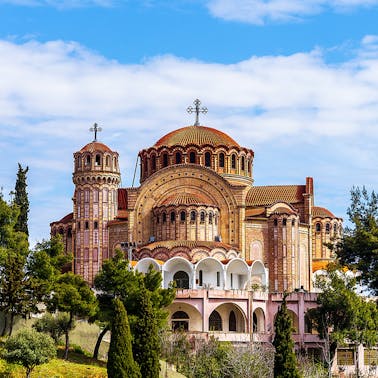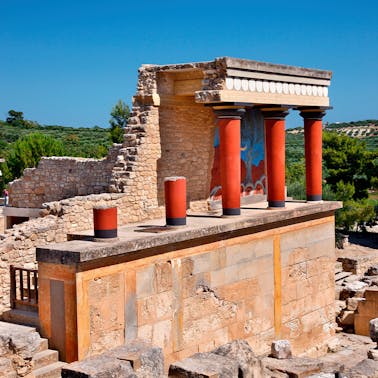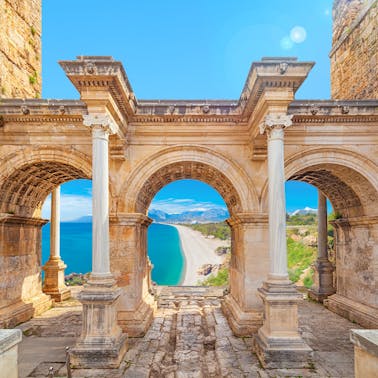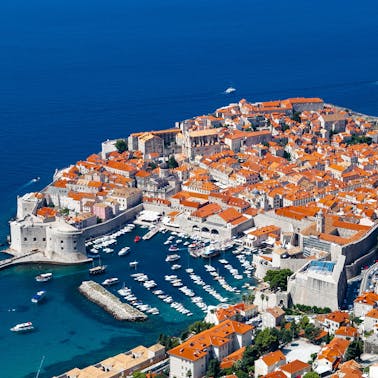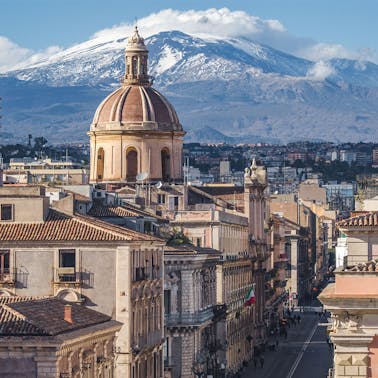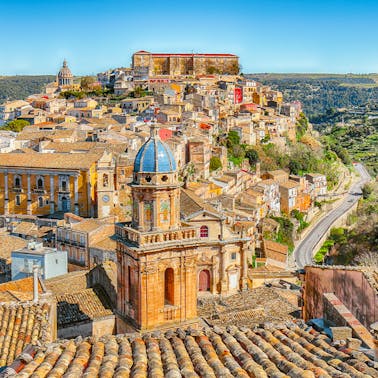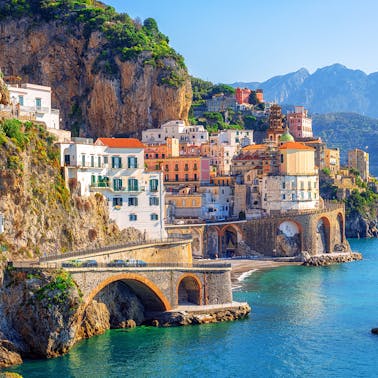Temple of Poseidon & Cape Sounion
Book day trips to see one of the most picturesque coastal views of Greece at Cape Sounion, and the famous Temple of Poseidon that looms over it.
25.6K+ travellers love this
See what they have to say
Visitor's guide
Must-see highlights & key info
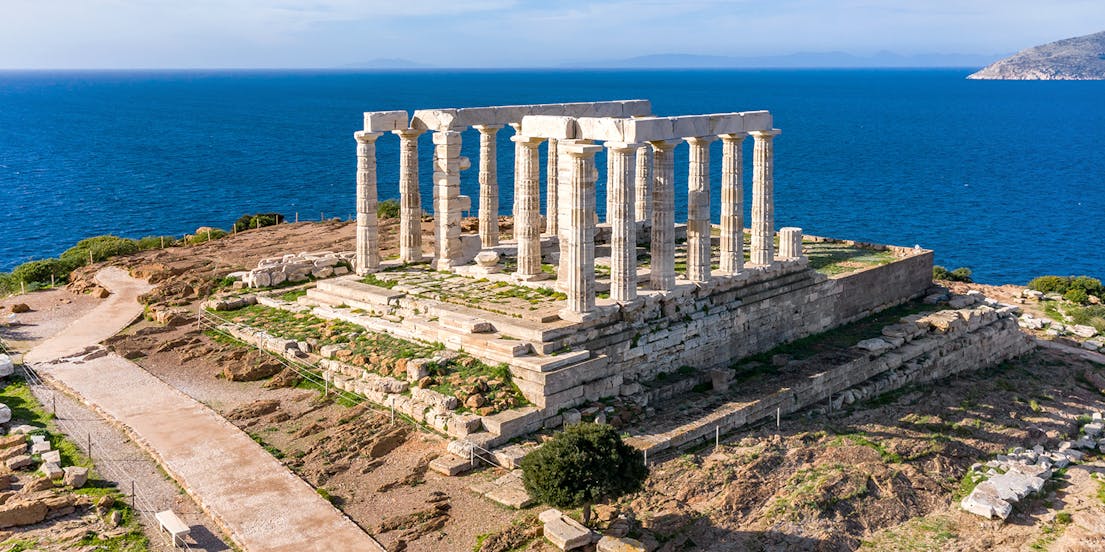
- Admire a memorable sunset at Cape Sounion in Greece.
- See the incredible Temple of Poseidon, built during the Golden Age of Athens. Get a chance to go inside the temple to discover its rich history.
- Travel through the spectacular Athens Riviera in the comfort of an air-conditioned bus.
- With an English-speaking driver and escort by your side, learn a great deal about the area.
- Elevate your experience with an audio guide available in 6 languages or an expert-led tour.
More details
- Admire a memorable sunset at Cape Sounion in Greece.
- See the incredible Temple of Poseidon, built during the Golden Age of Athens. Get a chance to go inside the temple to discover its rich history.
- Travel through the spectacular Athens Riviera in the comfort of an air-conditioned bus.
- With an English-speaking driver and escort by your side, learn a great deal about the area.
- Elevate your experience with an audio guide available in 6 languages or an expert-led tour.
-
Discover Athens at your own pace with a 2-day unlimited hop-on hop-off bus tour, providing the flexibility to customize your itinerary.
-
Get access to pre-recorded commentary available in 16 languages as you traverse the city's 35 stops including the Temple of Zeus and the Panathenaic Stadium.
-
Marvel at the breathtaking sunset over the Aegean Sea as the ancient Temple of Poseidon is bathed in a golden glow, perched majestically on the rugged cliffs of Cape Sounion.
-
Discover the ancient Temple of Poseidon, a 5th-century BC masterpiece renowned for its striking Doric columns and captivating mythological significance, set atop dramatic coastal cliffs.
More details
-
Discover Athens at your own pace with a 2-day unlimited hop-on hop-off bus tour, providing the flexibility to customize your itinerary.
-
Get access to pre-recorded commentary available in 16 languages as you traverse the city's 35 stops including the Temple of Zeus and the Panathenaic Stadium.
-
Marvel at the breathtaking sunset over the Aegean Sea as the ancient Temple of Poseidon is bathed in a golden glow, perched majestically on the rugged cliffs of Cape Sounion.
-
Discover the ancient Temple of Poseidon, a 5th-century BC masterpiece renowned for its striking Doric columns and captivating mythological significance, set atop dramatic coastal cliffs.
-
Step into the past with access to the majestic Acropolis and Parthenon, marvel at the ancient structures and soak in panoramic views of Athens.
-
Enhance your exploration with a multilingual audio guide, and learn about the rich history in your preferred language.
-
Experience the magic of a picturesque sunset from Cape Sounion on a comfortable bus drive through the scenic Athens Riviera, with an English-speaking driver.
-
Witness the majestic Temple of Poseidon perched on a cliff above the Aegean Sea and learn about its history from your English-speaking driver/escort.
-
Fun fact: The image of the temple on UNESCO's logo is a representation of the Parthenon, built in honor of the Greek goddess Athena.
More details
-
Step into the past with access to the majestic Acropolis and Parthenon, marvel at the ancient structures and soak in panoramic views of Athens.
-
Enhance your exploration with a multilingual audio guide, and learn about the rich history in your preferred language.
-
Experience the magic of a picturesque sunset from Cape Sounion on a comfortable bus drive through the scenic Athens Riviera, with an English-speaking driver.
-
Witness the majestic Temple of Poseidon perched on a cliff above the Aegean Sea and learn about its history from your English-speaking driver/escort.
-
Fun fact: The image of the temple on UNESCO's logo is a representation of the Parthenon, built in honor of the Greek goddess Athena.
-
Discover the best of ancient and modern Greece on this full-day guided tour from the Acropolis to Omonia Square.
-
Avoid all winding ticket queues at various attractions.
-
Take Instagram-worthy photos and renowned historical sites such as the Panathinaiko Stadium.
-
Drive past the Athens trilogy, National Garden, Hadrian’s Arc, St. Paul’s Church, and much more.
-
Enjoy an informative tour of UNESCO-listed Acropolis & the New Acropolis museum.
-
Travel back in time with a trip to the Temple of Poseidon at Cape Sounion.
-
Wrap up your exciting day as you catch breath-taking panoramic views of the sea from the hilltop.
More details
-
Discover the best of ancient and modern Greece on this full-day guided tour from the Acropolis to Omonia Square.
-
Avoid all winding ticket queues at various attractions.
-
Take Instagram-worthy photos and renowned historical sites such as the Panathinaiko Stadium.
-
Drive past the Athens trilogy, National Garden, Hadrian’s Arc, St. Paul’s Church, and much more.
-
Enjoy an informative tour of UNESCO-listed Acropolis & the New Acropolis museum.
-
Travel back in time with a trip to the Temple of Poseidon at Cape Sounion.
-
Wrap up your exciting day as you catch breath-taking panoramic views of the sea from the hilltop.
-
Explore the majestic Temple of Poseidon perched at the tip of Cape Sounion.
-
Accompany an expert guide to learn more about the monument.
-
Enjoy pick-up and drop-off services in a luxurious air-conditioned vehicle.
-
Bask in unparalleled panoramic views of Sounion from the southeastern peak.
-
Soak in the jaw-droppingly brilliant sunset over the Aegean Sea.
More details
-
Explore the majestic Temple of Poseidon perched at the tip of Cape Sounion.
-
Accompany an expert guide to learn more about the monument.
-
Enjoy pick-up and drop-off services in a luxurious air-conditioned vehicle.
-
Bask in unparalleled panoramic views of Sounion from the southeastern peak.
-
Soak in the jaw-droppingly brilliant sunset over the Aegean Sea.
Pro tips to help you make a pick
Similar things to do in Athens
About Temple of Poseidon
A sacred bastion overlooking the Aegean Sea since 440 BC, the Temple of Poseidon is excellently preserved. Visit this cliff temple to delve into the fascinating mythical, cultural, and even military history of ancient Greeks while enjoying awe-inspiring sunset views.
Why visit Temple of Poseidon?
Plan your visit
Main entrance
There is just one main entrance to the Temple of Poseidon. Entry is ticketed.
- Due to longer days, the Temple of Poseidon is open until 6:30pm or 7pm on some summer days.
- The site is closed on New Year's, 25th March, 7th May, Easter Sunday, 25th, and 26th December.
- The site is open from 12pm to 5pm on Good Friday and between 9:30am and 3:30pm on Holy Saturday.
- You can step inside the temple for free on 6th March, 18th April, 18th May, European Heritage days, usually on the last weekend of September, and on 28th October.
You can find a museum shop inside the archeological site that houses the Temple of Poseidon.
Cafe Naos functions within the archeological site and serves good food at affordable rates.
There are a few toilets near the entrance to the Temple of Poseidon.
Free parking lots with limited spaces are available just out of the entrance to the Temple of Poseidon.
Though much of the archeological site is wheelchair accessible, the terrain is uneven and rocky in places, so movement can be limited. More efforts are taken to make the site more accessible.


